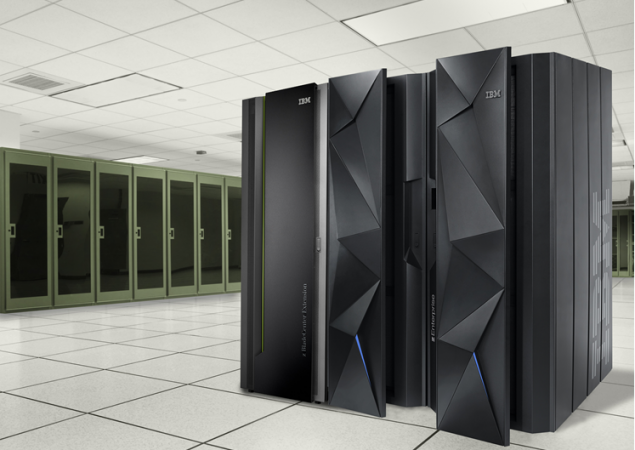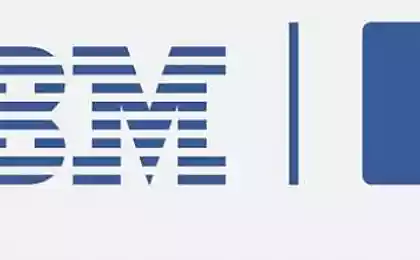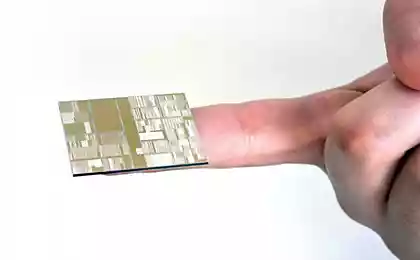1287
50 years of mainframe
Not so long ago, March 12, the Internet celebrated its anniversary - 25 years. Already among us there are people who do not remember a time when it was impossible to go online and check the news, send an email to e-mail a friend or manage your business, sitting at home in a bathrobe. But we can say that the Internet is a teenager ... in comparison with modern mainframe. Today he is 50 years old!

all started April 7, 1964 IBM held 77 press conferences in 15 countries, making, according to the head of the firm of Thomas Watson, Jr., "the most important announcement in the history of the company." On this day, IBM announced the release of a family of mainframe computers called the System / 360. The aim of the project was to develop a family of different performance and cost computers that will satisfy the most demanding customers, and it was one of the most expensive projects in the history of computing.
To date, the IBM to invest $ 5 billion. (Approximately $ 35 billion. Today) in the System / 360 seems natural and almost inevitable, but at the time it looked very risky. IBM has staked its existence. As a result, System / 360 marked the beginning of a new era in computing.
Prior to 1965, the world produced a variety of computer systems, each of which had its own architecture, element base and, most importantly, their software. Client programs written for one computer can not be solved on a computer from another manufacturer. Moreover, there was no complete continuity even between models of the same manufacturer of computers. Each computer was developed under an order for specific business purposes, so was unique.
With the release of a family of computers System / 360 order in the computer world has become greater. Revolutionary spirit of the System / 360 was the fact that all models have the same overall architecture and operating system OS / 360.

S / 360 was the first computer used to implement many microcode, machine instructions, unlike systems in which all the machine instructions are implemented in hardware. Microcode (or firmware, as it is sometimes called) is composed of micro-instructions stored inaccessible to users who are functional level between the hardware and software. The advantage of using microcode is flexible whereby any change or a new function can be realized by simply changing the existing firmware, instead of replacing the computer.
Using standardized mainframe computers to handle the workload, customers can build business applications that did not require special hardware or software. Moreover, customers could easily switch to new and more powerful processors, without fear of compatibility issues with existing applications.
The first business application created mainly in assembler, COBOL, FORTRAN or PL / 1, and a significant number of these old programs still in use. You might think buying your first phone in the future you will be able, for example, synchronize contacts with the modern model? Or continue to set records in the famous "snake"? I doubt it. But on modern mainframe you quietly run the program, designed for the System / 360.

The emergence of a new family of mainframes helped NASA put a man on the moon, airlines offer online check-in, and banks to prevent fraud. And these examples, the scope of the mainframe does not stop. In fact, the mainframe has always been behind the scenes, but now is really hard to imagine a world without such computing "monsters" with a frequency of 5 GHz 5, 101 core and 3 TB of RAM.
Let's congratulate the mainframe with his birthday! A tomorrow will general celebration televised live at 2 pm in New York.
Source: habrahabr.ru/company/ibm/blog/218501/

all started April 7, 1964 IBM held 77 press conferences in 15 countries, making, according to the head of the firm of Thomas Watson, Jr., "the most important announcement in the history of the company." On this day, IBM announced the release of a family of mainframe computers called the System / 360. The aim of the project was to develop a family of different performance and cost computers that will satisfy the most demanding customers, and it was one of the most expensive projects in the history of computing.
To date, the IBM to invest $ 5 billion. (Approximately $ 35 billion. Today) in the System / 360 seems natural and almost inevitable, but at the time it looked very risky. IBM has staked its existence. As a result, System / 360 marked the beginning of a new era in computing.
Prior to 1965, the world produced a variety of computer systems, each of which had its own architecture, element base and, most importantly, their software. Client programs written for one computer can not be solved on a computer from another manufacturer. Moreover, there was no complete continuity even between models of the same manufacturer of computers. Each computer was developed under an order for specific business purposes, so was unique.
With the release of a family of computers System / 360 order in the computer world has become greater. Revolutionary spirit of the System / 360 was the fact that all models have the same overall architecture and operating system OS / 360.

S / 360 was the first computer used to implement many microcode, machine instructions, unlike systems in which all the machine instructions are implemented in hardware. Microcode (or firmware, as it is sometimes called) is composed of micro-instructions stored inaccessible to users who are functional level between the hardware and software. The advantage of using microcode is flexible whereby any change or a new function can be realized by simply changing the existing firmware, instead of replacing the computer.
Using standardized mainframe computers to handle the workload, customers can build business applications that did not require special hardware or software. Moreover, customers could easily switch to new and more powerful processors, without fear of compatibility issues with existing applications.
The first business application created mainly in assembler, COBOL, FORTRAN or PL / 1, and a significant number of these old programs still in use. You might think buying your first phone in the future you will be able, for example, synchronize contacts with the modern model? Or continue to set records in the famous "snake"? I doubt it. But on modern mainframe you quietly run the program, designed for the System / 360.

The emergence of a new family of mainframes helped NASA put a man on the moon, airlines offer online check-in, and banks to prevent fraud. And these examples, the scope of the mainframe does not stop. In fact, the mainframe has always been behind the scenes, but now is really hard to imagine a world without such computing "monsters" with a frequency of 5 GHz 5, 101 core and 3 TB of RAM.
Let's congratulate the mainframe with his birthday! A tomorrow will general celebration televised live at 2 pm in New York.
Source: habrahabr.ru/company/ibm/blog/218501/
Smart watches with their own hands for 1500 rubles
Balloon Google Loon circled Earth for a record 22 days


















